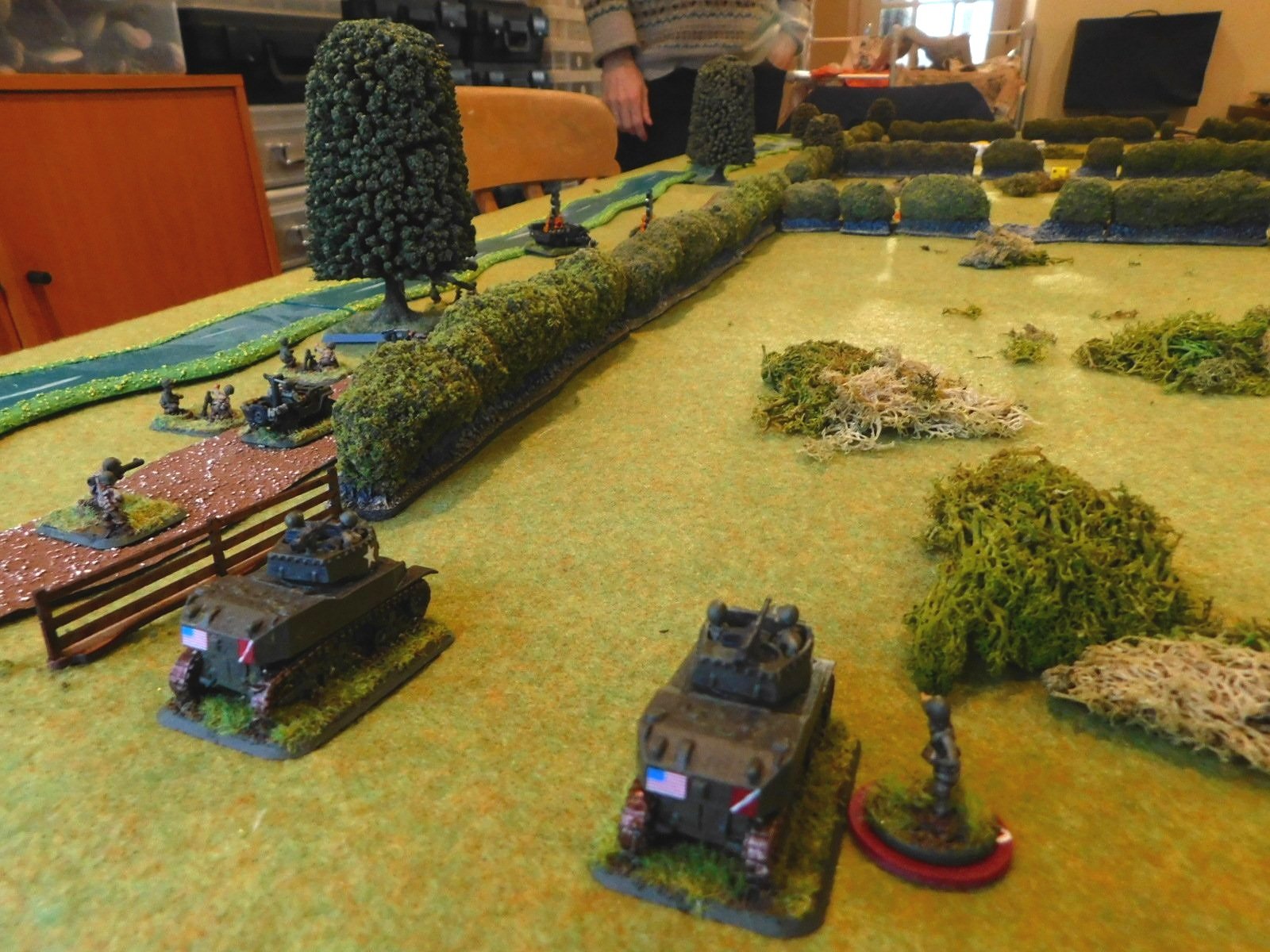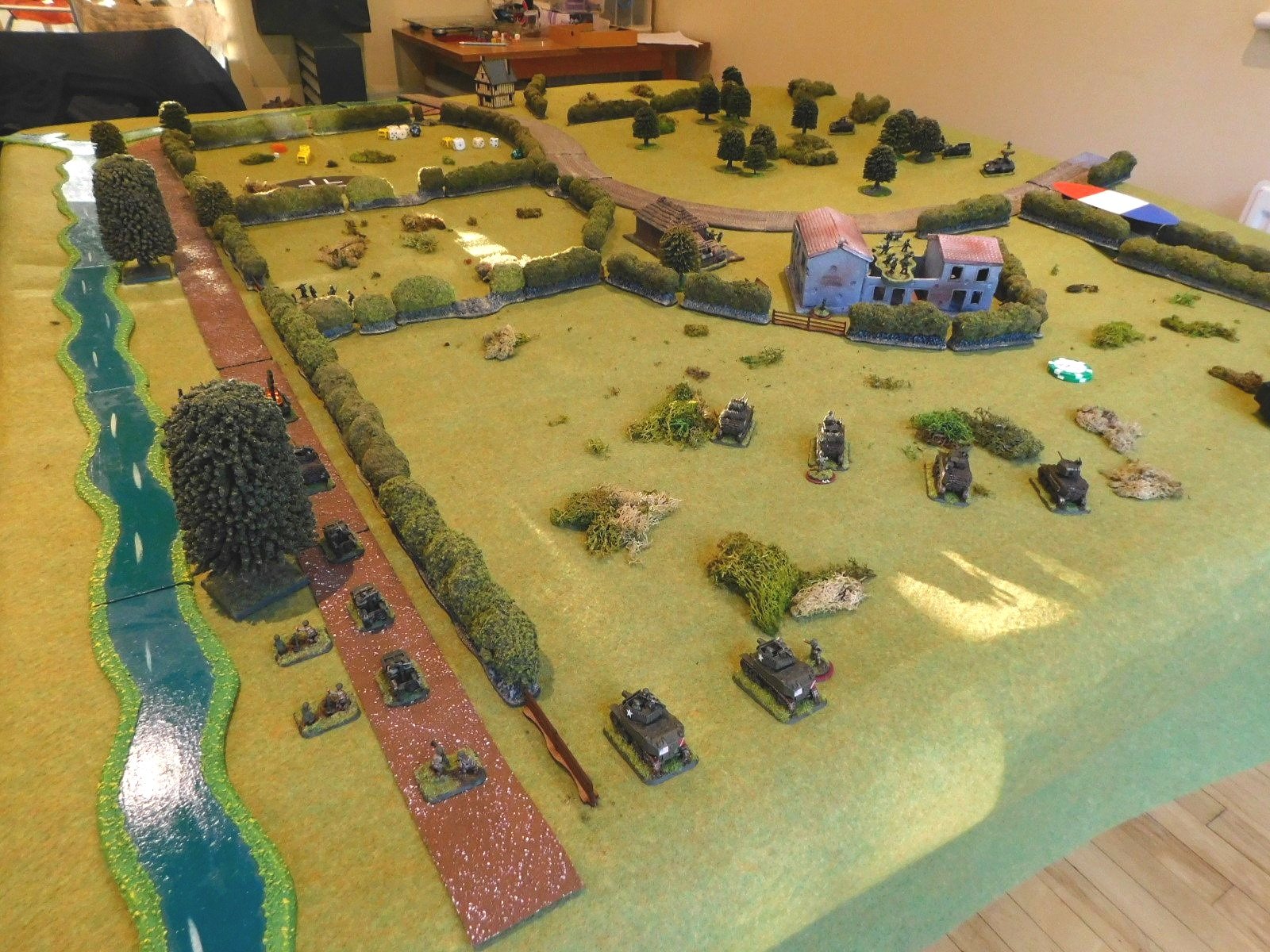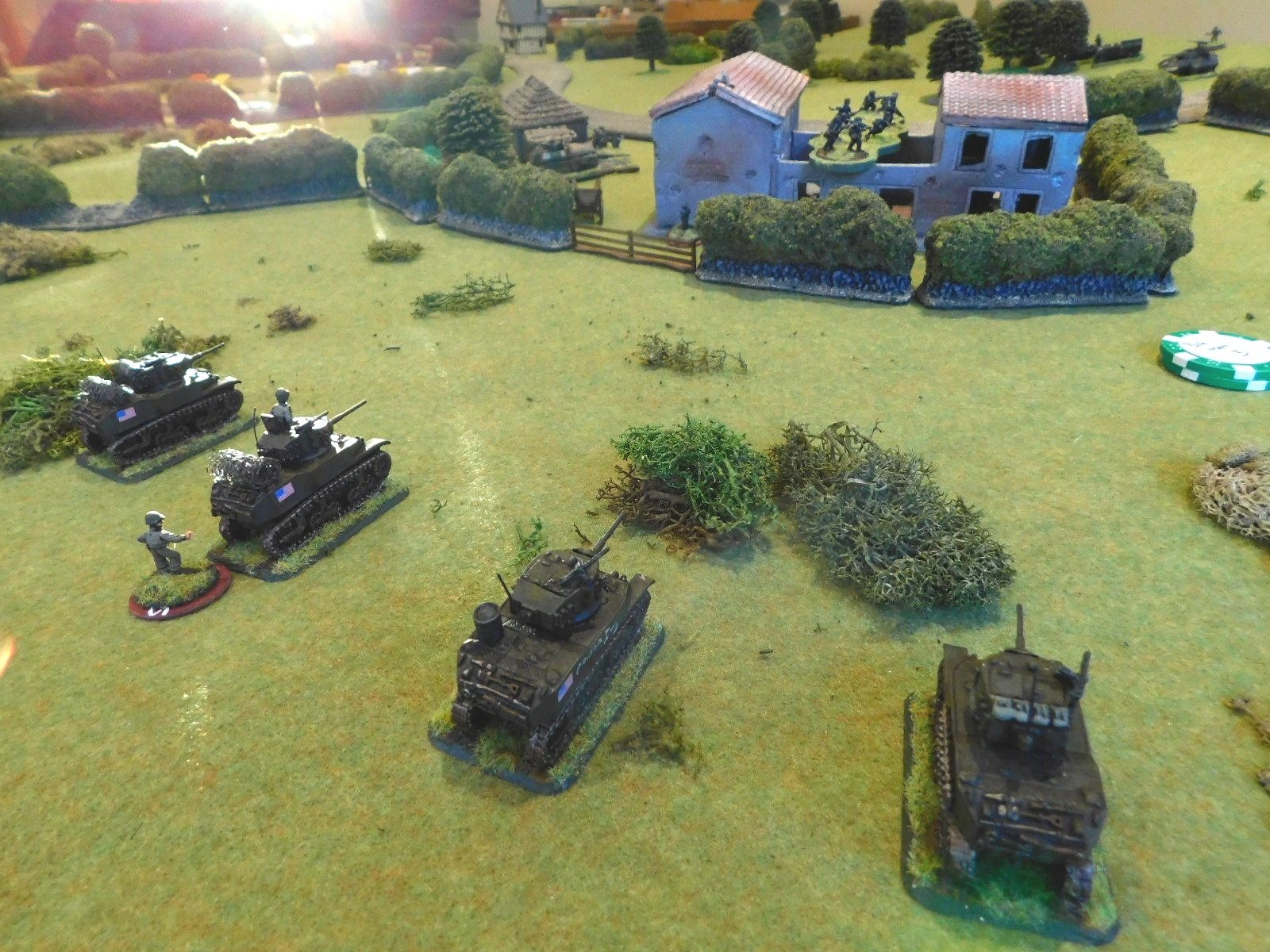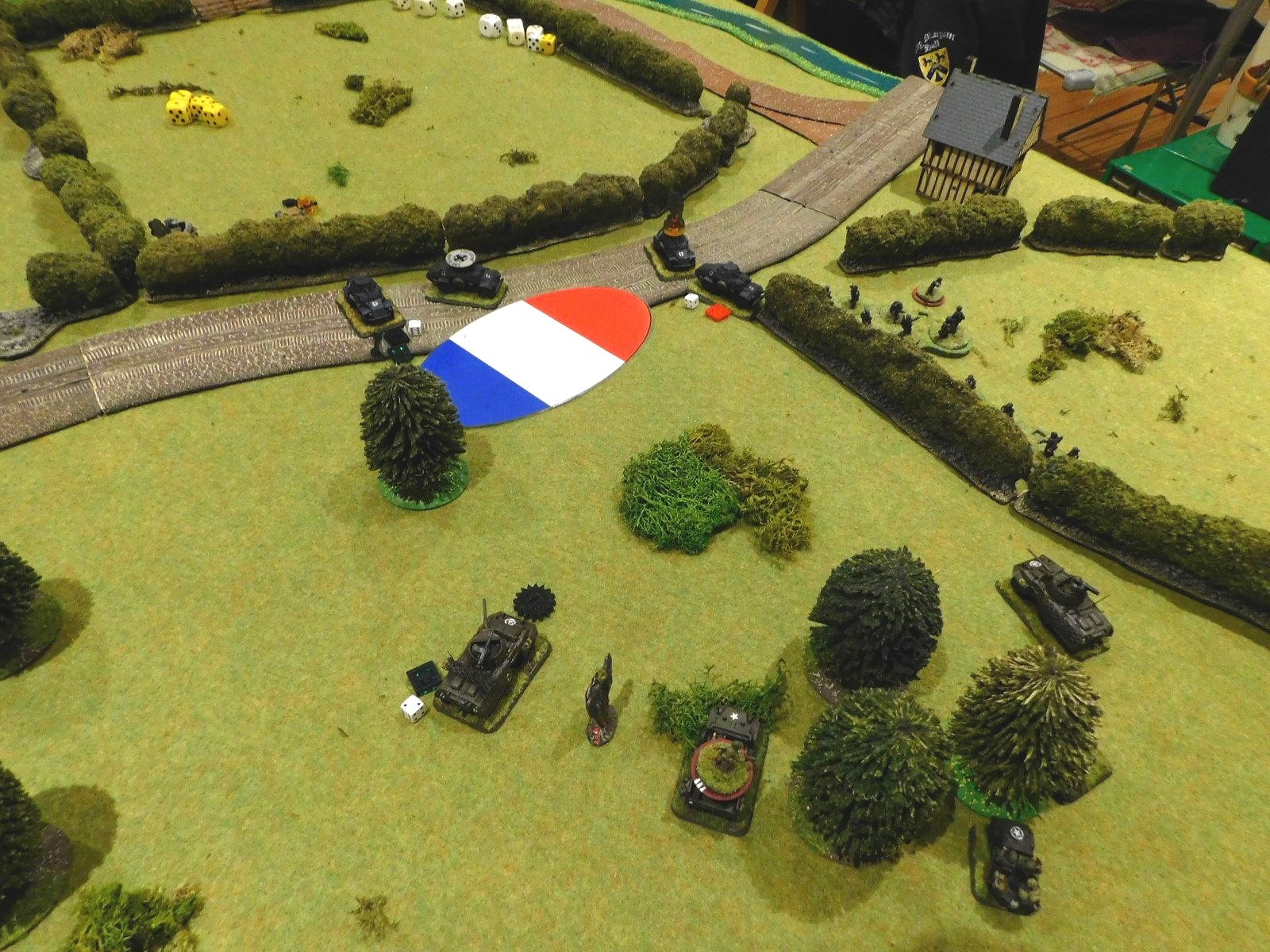The first scenario in the Blenneville or Bust! scenario pack is a clash of reconnaissance forces.
The Americans are trying to scout whether the bridge at the far end of the table (by the chair in the picture below) is strong enough to take the weight of a medium tank. They enter the table on any of the roads at the near end. The Germans are trying to stop them doing so, and start the game under Hidden Blinds anywhere on the table.
The first action took place on the left hand side of the table, where a US reconnaissance column headed up the road as fast as it could. It soon ran into a platoon of German infantry hunkered down behind the bocage near the first field.
The Germans opened fire with a couple of Panzerschrecks, blowing two of the US column’s Staghounds to bits. Without enough infantry to suppress the German platoon, the rest of the American column had no chance of fighting their way through, so they settled down to use their 60mm mortars to keep the Germans occupied and called for help.
Another US column appeared on the other side of the table, but immediately came under fire from a German machine gun and SdKfz 250 half-track hiding in the central farm. The farm was also obviously holding more men, so the US recon platoon scattered off the road onto the hillside, attempting to take cover behind the various copses there. Two 60mm mortar teams were lost to machine gun fire before they could do so.
With both routes onto the table effectively blocked, the Americans called for their reinforcements. First to arrive were a couple of M8 HMCs, who immediately put the enemy troops blocking the left flank under fire, pinning them down even if hardly any casualties were inflicted.
Next up were four M5 Stuart light tanks. These looked really useful, but then I realised that their 37mm pop-guns weren’t going to have much effect against dug-in infantry, and with the emphasis on “light”, it was going to be risky to get close enough to the Germans to winkle them out with machine gun fire. Oh, and those two Panzerschrecks were still in the area and, although currently pinned by mortar fire, would love to take out a Stuart or two!
With the left hand column still pinned by the German platoon in front of them, the tanks busy keeping the enemy in the central farm occupied, it was down to the right hand reconnaissance column, what was left of it, to keep on-mission and heading for the bridge.
This they did, but unfortunately the Germans had more troops with which to stop them: a zug of four SdKfz 231 armoured cars with their 20mm cannon itching to get into action. These moved into a position to block the advance of the Staghounds on the right.
Fortunately their aim was not very good, and although bits were knocked off the closest Staghound, the rest were still available for action and opened fire in return, accompanied by one or two of the Stuarts who were, by now, trying to work their way around the farm albeit hampered by the rough ground in the fields.
All four of the German armoured cars were damaged in some way: with one blown up, one bailed, one with a gun knocked out, and the last with its capacity for movement severely curtailed. This was good news, but unfortunately the Germans then revealed another infantry platoon lurking behind the bocage near the bridge right on the flank of the path that the surviving Staghounds would have to take to get past.
Meanwhile on the left, with the Germans nicely disrupted by the Mortar Carriers, the Americans there laid down smoke and hurtled a Staghound along the road and past the blockage. This was useful, as that Staghound could go hell bent for leather and get to the bridge: provided, of course, that the Germans didn’t have anything else in the way further down the road.
Their efforts, however, proved unnecessary, as hurtling down the road, still under a Blind, came the seven jeeps of the American Intelligence & Reconnaissance platoon attached to 425th Infantry Regiment (“the Coyotes”). Just the sheer number of jeeps arriving proved too many for the Germans to stop, and as the US victory conditions involved only getting one unit onto the bridge (presumably to jump up and down a bit to see how strong it was), the Germans decided that further resistance was pointless and melted away.
The Americans had succeeded in their mission!
Robert Avery




















